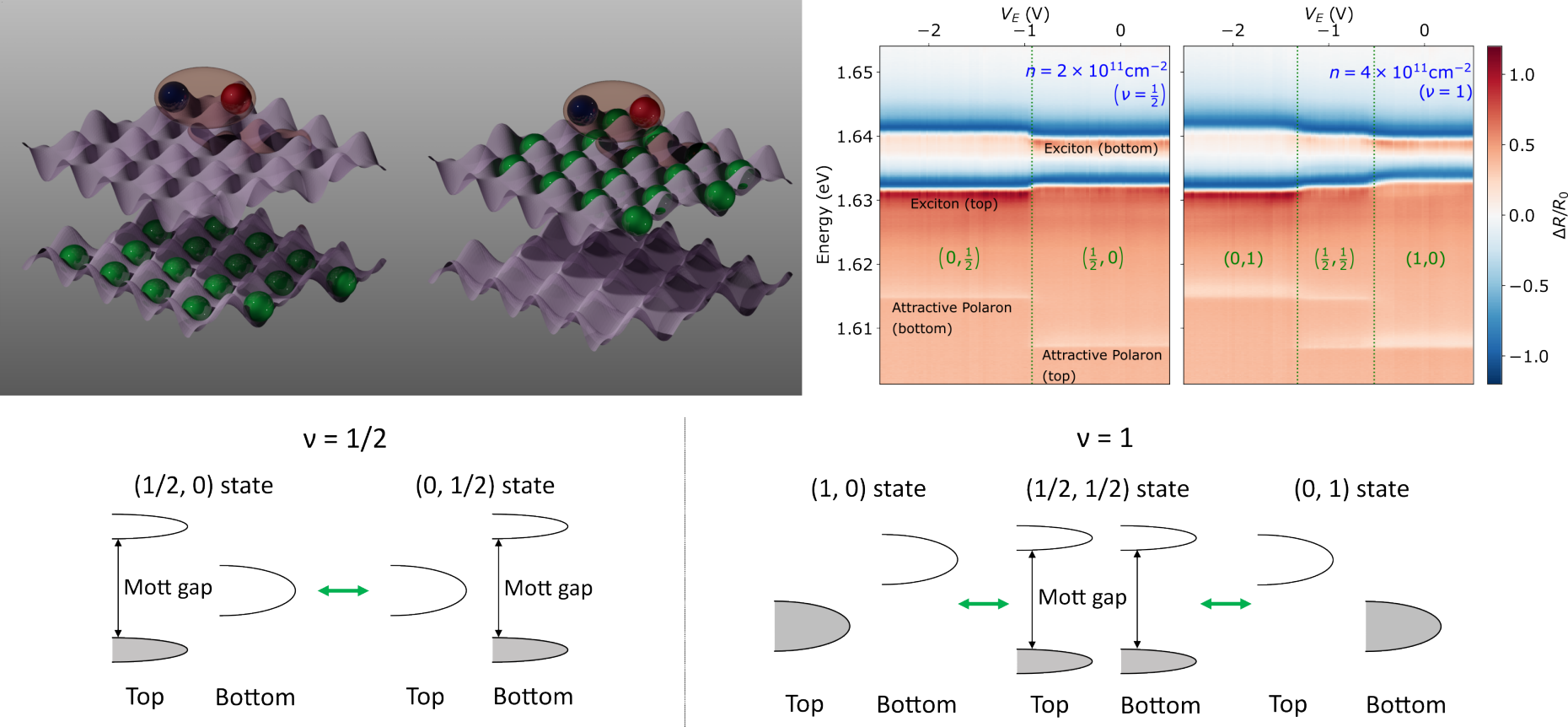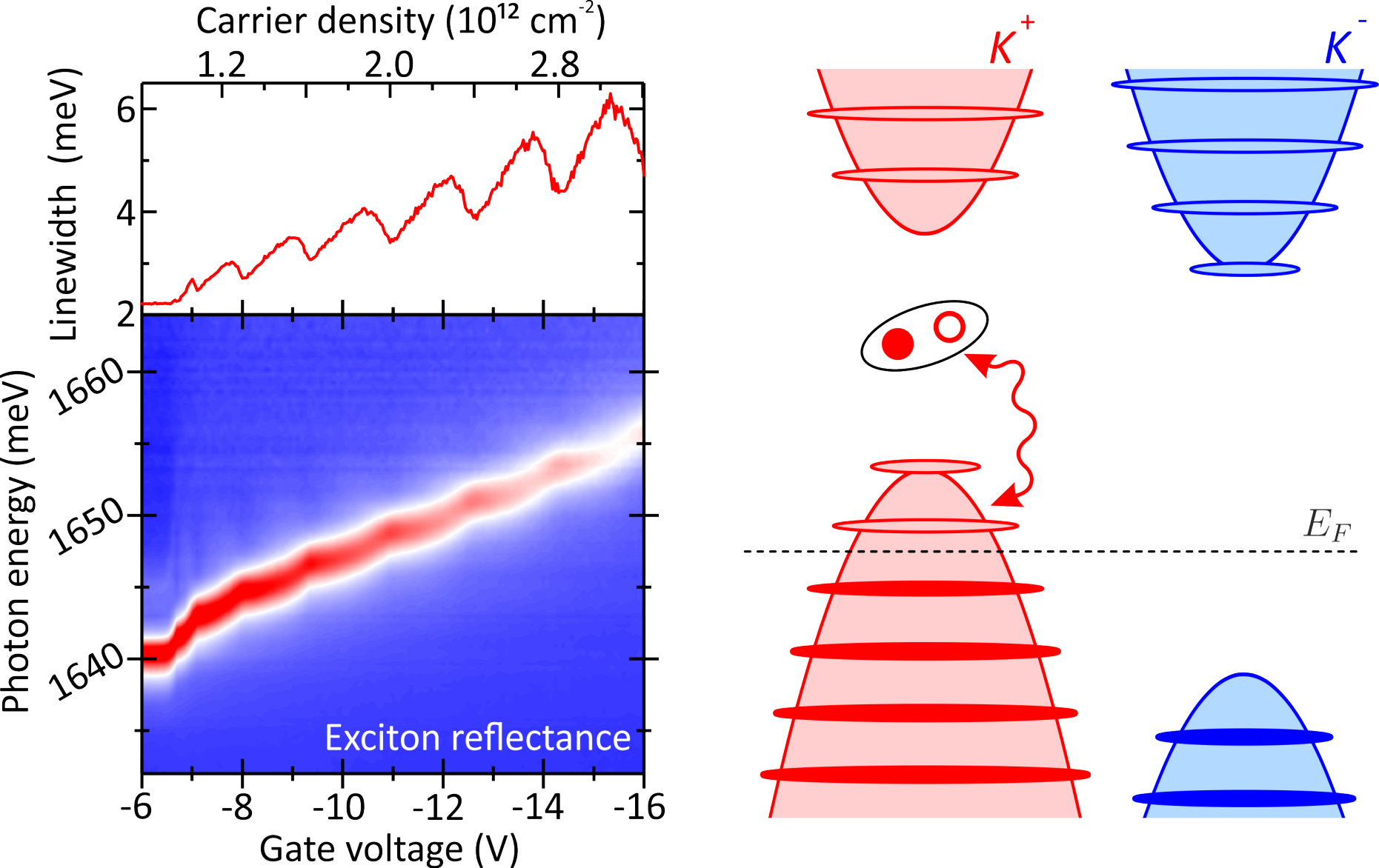Optical investigation of electronic systems in TMD heterostructures
Controlling coherent coupling of inter-layer and intra-layer excitons in bilayer TMD system
In bilayer TMD system, there are two species of excitons (electron-hole bound pair). One is intra-layer exciton, whose electron and hole are located in a same layer. The other is inter-layer exciton, whose electron and hole are spatially separated into different layers. These excitons show different properties. Intra-layer exciton couples to photon strongly, and inter-layer exciton couples to perpendicular electric field strongly. Quantum tunneling of hole between two layers coherently couples these two exciton states, and creates superposition state. We demonstrated the existence of this new superposition state of exciton (dipolar exciton) which inherit both nature of inter-layer and intra-layer excitons, and also controlled the ratio of superposition by changing electric field [1]. Future direction is to investigate the system with an optical cavity. Cavity photon will couple to this dipolar exciton and creates three body hybridized state, called as dipolariton, which will enhance and enable to control the interaction of polariton quantum fluid.

Strongly correlated electrons in Moiré
superlattice probed by excitons
Bilayer TMD system with a small twist angle is an exotic system. Due to its twist angle, the crystal lattice potential shows a long-range interference pattern, called as Moiré superlattice. Electrons trapped in this Moiré superlattice have localized nature and interact with each other strongly. Therefore Moiré superlattice system is a rich play ground to study strongly correlated electron (Fermion) system. We demonstrated the existence of strongly correlated electron state in TMD bilayer system (MoSe2 / hBN / MoSe2 heterostructure) by optical spectroscopy where we used exciton as a local probe of electronic states [1]. This novel system equipped with exciton spectroscopy technique will allow us to investigate further exotic phase of matters in future.

Shubnikov–de Haas Oscillations in Optical Conductivity of Monolayer MoSe2
Optical spectroscopy of a Landau-quantized, two-dimensional carrier system exposed to strong magnetic fields provides a direct tool for investigation of strongly correlated quantum-Hall phenomena. We recently demonstrated that strong interactions between tightly bound excitons and itinerant carriers yield unique signatures of Landau levels in optical excitation spectrum of a TMD monolayer. Specifically, the strength of such interactions is found to be sensitively dependent on the Landau-level filling factor, giving rise to prominent oscillations of energy and linewidth of the excitonic transitions. This observation paves the way towards further optical studies of integer and fractional quantum-Hall states in atomically thin TMDs.
